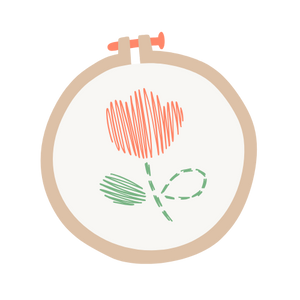Fast & tracked delivery
Your dose of creativity arrives quickly at your home, you can track your package right to your mailbox.

Pastel colors, adorable characters, cute accessories… Kawaii is one of those Japanese trends that has captivated the world. It's a true culture of "cuteness," joyful, creative, and inspiring. From fashion to food, and including home decor and leisure activities, the kawaii aesthetic transforms everyday life into a sweet and colorful world.
The Japanese word kawaii (かわいい) literally means “cute” or “adorable” . But behind this simple translation lies a whole aesthetic and cultural universe .
Originally, the term referred to something that aroused a form of tenderness or protection , a bit like when facing a child or a small animal: something vulnerable and adorable , which awakens a gentle emotion.
Over time, kawaii has become a true aesthetic , recognizable by its pastel colors, childlike characters, and minimalist design. Being “kawaii” isn't just about wearing cute clothes or collecting accessories: it's also about cultivating a gentle, lighthearted, almost naive personality that values kindness and delicacy in a world sometimes perceived as too harsh.
The kawaii movement really took off in the 1970s and 1980s , at the heart of Japanese pop culture . Teenagers of the time, especially young girls, began to develop a rounded and decorative handwriting — called “kawaii writing” — as a form of differentiation and cultural rebellion against strict school codes.
At the same time, companies like Sanrio brought to life characters that became global icons: Hello Kitty foremost among them, the ultimate symbol of innocence and cuteness. These kawaii characters quickly invaded stationery, fashion, and merchandise, establishing themselves as a universal visual language.
The kawaii style thus embodied a movement that was both aesthetic and social: a way to express creativity and an accepted vulnerability , in opposition to a Japan traditionally attached to rigor and seriousness. Sub-currents like burikko-ji (a deliberately childlike and affected style) amplified this trend, confirming the role of kawaii as a cultural reinvention rather than a mere passing fad.
Discover our selection of kawaii items : plush toys, stationery, decorations and accessories to add a touch of cuteness to your everyday life.
🎀 Check out our kawaii itemsKawaii is not just a visual style: it is expressed in all aspects of daily life.
The kawaii aesthetic is also expressed through a multitude of objects and trends that have become cult classics:
Kawaii is no longer reserved for Japan: it has become a true global trend .
Want to add a touch of cuteness to your everyday life? Here are some simple ideas to incorporate the kawaii aesthetic into your home:
Commodo lorem morbi aliquam dui turpis. Iaculis pretium poses nulla tincidunt blandit. A at elementum faucibus integer.

Your dose of creativity arrives quickly at your home, you can track your package right to your mailbox.

Got a problem? Don't panic, you have 15 days to change your mind.

Creative activities for young and old (from 0 to 77 years old!), perfect for disconnecting from screens and spending real time together.

JOY! is fun, colorful, and a touch of madness to dust off your creative leisure activities!
